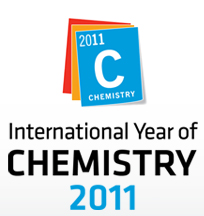- Start page
- NEWly buily paintcan furnace June 2020
- Newly buily barrel furnace June 2018
- Videos from several experiments
- Home made fume hood
- Alloying nickel silver
- Making sphecical domes of silver
- Making a flat ring of silver
Home built propane furnace
Iron cast run on natural gas 2015 Nov 8 with success Here a pour of a cast iron circular bowl of 100mm diameter and 4mm thickness. Here a pour of a cast iron circular bowl of 100mm diameter and 4mm thickness.
Propane furnace test run on natural gas 2014 Dec 2 with success This video shows a dry test run whether the propane furnace can run on a residential natural gas supply and yet reach 1500°C to melt cast iron. This video shows a dry test run whether the propane furnace can run on a residential natural gas supply and yet reach 1500°C to melt cast iron.
Iron casting 2014 Dec 2 with success This video shows a succeeded attempt of casting a replica of an earthenware teapot shaped teabag saucer. This video shows a succeeded attempt of casting a replica of an earthenware teapot shaped teabag saucer.
|
|
|
In 2004 I started this project. First I made a frame from steel bars and strips which I welded in a hexagonal shape. I did this earlier in 2004 when I built a refractory castable concrete furnace in it but that was a failure. The concrete drained all the heat from the burner: after 20 minutes the whole concrete block get dull red hot and the temperature inside the furnace got no more than 900°C. So I demolished the concrete and started using the refractory bricks. In 2005 I bought very lightweight bricks of 6.5x11.5x23cm at Artie in Oss which is actally for ceramics and pottery furnace supply. Finally the first weekend in February 2006 I built the furnace using Blakite (user manual) for building the blocks. The bricks are high-alumina based and are rated for 1650°C. Blakite is a kind of cement to 'glue' the bricks, is water based and required to set within a few days. When ready it is rated at 1600°C. The burner used I made myself from a design on the internet. I enhanced this burner for using forced draft air using a 12 volts air bed inflator available for $10 at an auto shop. A few days later the furnace got first fire, heating up slowly. Later I tried to heat the furnace again at full capacity with extra blown air and after 10 minutes the (empty) furnace got white hot, too bright to look in without dark glass ! After cooling down, the refractory on the bottom turned out to be molten (and frozen again of course), so the temperature must have risen to above 1600°C ! The C&A pictures are no banners or other advertising: I used a plastic bag of them to wrap around the bricks to be glued. Later on I used a type S Pt-Rh thermocouple and after 15 minutes the temperature above the crucible (filled with cast iron lumps) was 1460°C. A type K is unsuitable as it will melt away. It lasts approximately 13 minutes to heat the crucible to 1400-1500°C starting from a cold furnace. Furnace designThe walls are completely made from lightweight alumina/magnesia firebricks with excellent insulation properties, rated for 1700°C. On top of the furnace (under the lid) there is a 'collar' around the opening to prevent hot gases to escape from the sides which improves efficiency. So the hot gases can only escape via the hole in the lid. Only when the furnace is still cold the lid should not be closed completely otherwise the flame might extinguish. Moreover a piece of Fiberfrax® blanket used as a gasket on the top collar to force all the hot gases through the top hole. The lid has a central exhaust hole and a side hole of 8mm diameter which allows putting in a pyrometer or another temperature measuring device.Normally a propane fired furnace with natural drag can reach 1200-1300°C at most. Using forced draft with a blower does increase that to 1500°C and when the burner is set to full capacity (0.5 bar pressure) even 1600°C, but that shortens the refractory life considerably. Even for melting copper or silver in a smaller furnace made of gypsum insulating blocks and a 100cc crucible the forces draft blower heats up quicker while using considerably less gas. At temperatures over 1300°C dark gas welding goggles are required as it is too bright to view in. The try on 2010 Jan 24 I needed eleven minutes to melt 200g of cast iron and the burner (steel tube with 3mm thick walls) was molten at the tip.
The latest try on 2014 Dec 26 I tried to run this furnace on natural gas, just an ordinary residential supply with a homemade burner and the same aitbed inflator fan as for propane. I put a dry (i.e. no metal in it) 200ml crucible in it and heated it. You can also have a look at my Arc melting page. |
Photos of building of the furnace 2006 Feb 5/6
Powered, developed under Linux  and Mac
and Mac  and hosted under Linux.
and hosted under Linux.
This site is best viewed with Firefox, Safari, Chrome and Opera. Using landscape mode on a smartphone gives a better view.
